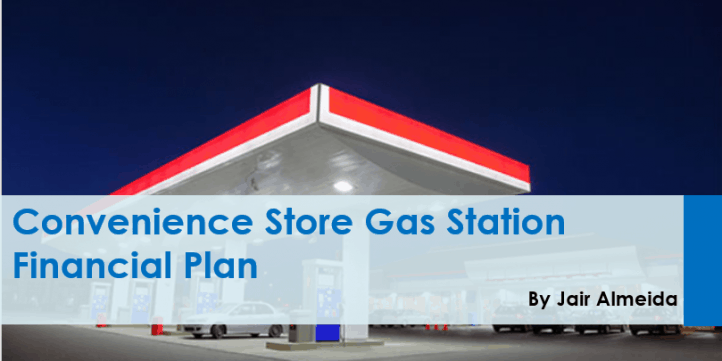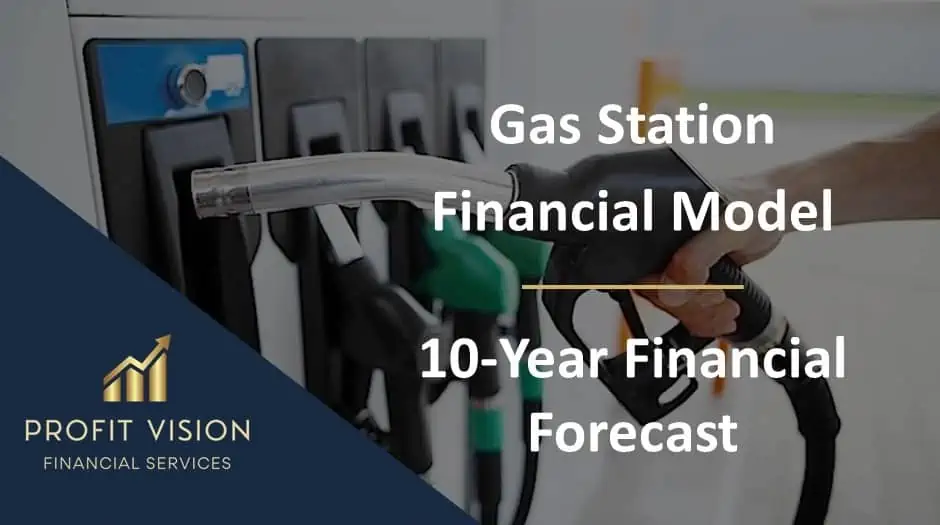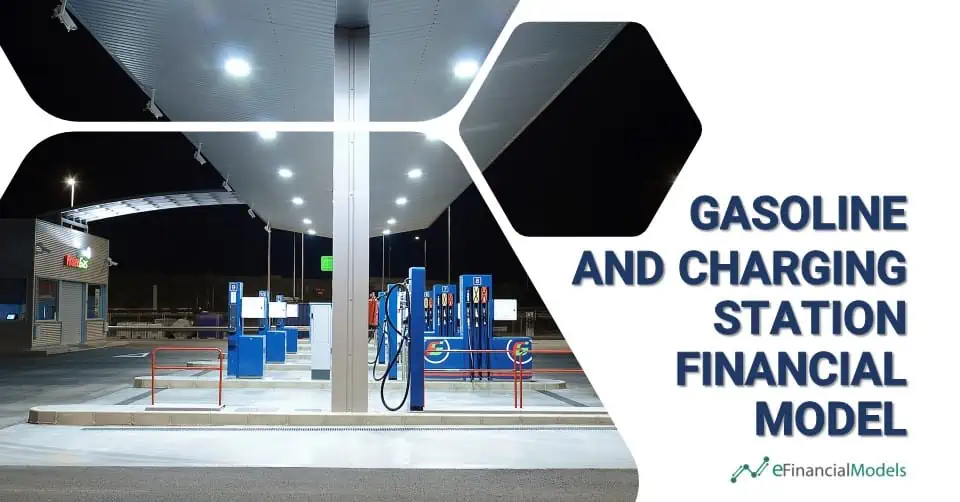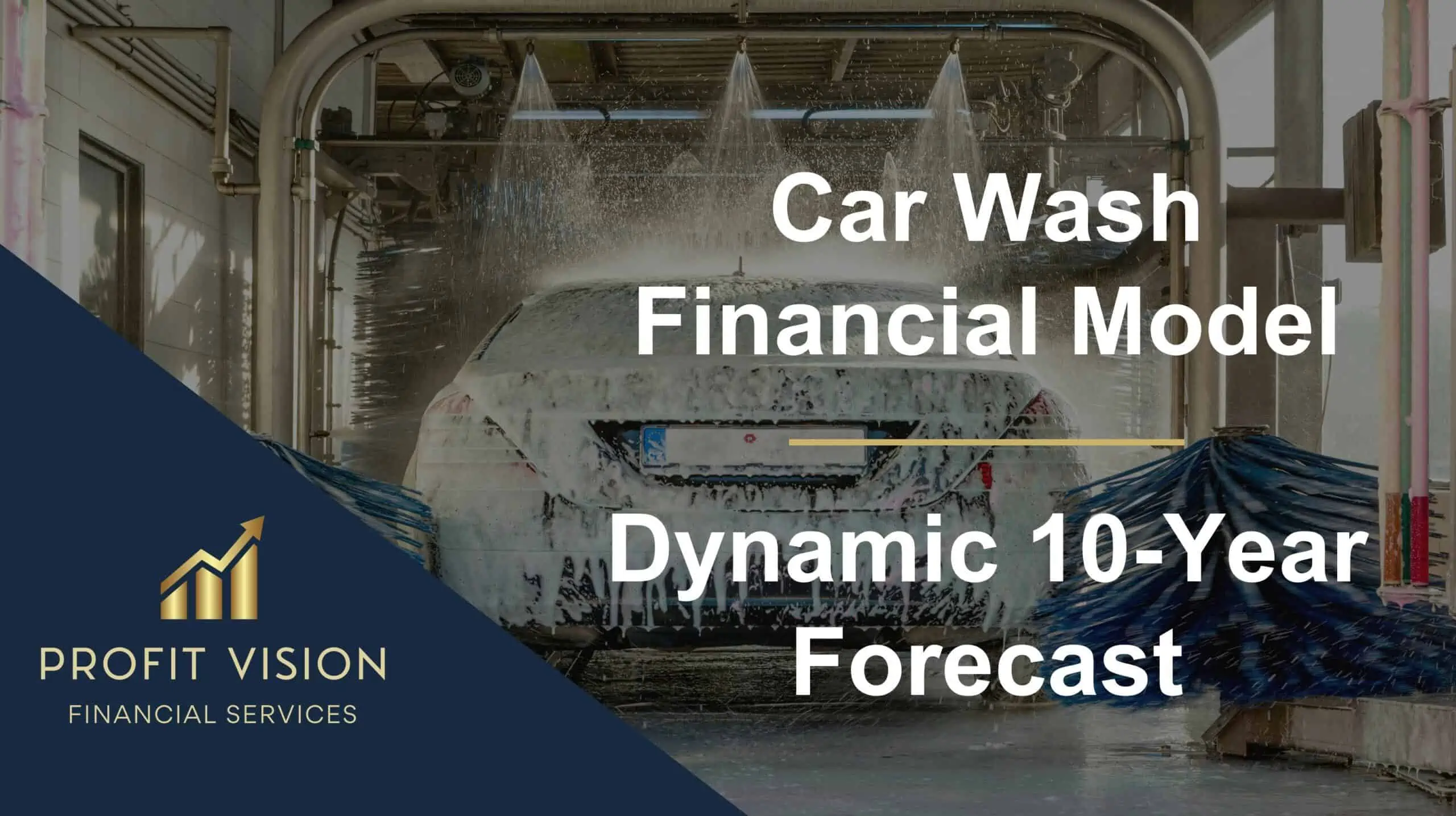Convenience Store Gas Station Financial Plan
This Financial Plan Model is a perfect tool for a financial feasibility study on launching a Convenience Store Gas Station. The model can be used to create 5 years’ projections.

This Financial Plan Model is a perfect tool for a financial feasibility study on launching a Convenience Store Gas Station. The model can be used to create 5 years’ projections.
The model additionally allows the user to develop scenarios based on the variation of key metrics, namely units sold, selling prices, and operational costs variation. After modeling the scenarios, the user can make a comparison of different scenarios side-by-side.
The user only needs to input information into the cells formatted in the dark blue font in the Assumptions sheet, any other formats are formulas or labels.
For demonstration purposes, the template is provided with information from a hypothetical business model for a Gas Station Business. The data must be erased/adjusted to fit the user’s needs.
Model Structure:
Intermediate Sheets (calculation sheets):
• Operations Sheet:
– Where the revenue is projected by using an easy-to-follow logic (customer served x % Purchase by Product x Average Order by Item —> revenue).
– The cost of revenue is calculated based on the cost margin defined for each line of a product;
– Staff Costs: Calculation of Wages & salaries based on the hiring plan set in the assumptions sheets;
• Debt Model: The user can model up to three loans. (the debt’s info are all inputted in the assumptions sheets);
• Assets: In this sheet, based on the assumptions set in the assumptions sheets, the investment and depreciation are calculated on a monthly basis;
• Working Capital: Calculation of the working capital requirement by using the collection, payment, and inventory assumptions.
Outputs:
• Executive Summary: The resulting financial data are consolidated in the summary sheet, where a brief and easily comprehensible view of the main KPIs and Charts are presented to the user in a ready-to-print format;
• Cases Overview: In this sheet, the user can analyze all the scenarios side-by-side (the user must run the macro to update the scenarios.);
• Yearly Financial Statements: Yearly P&L, Balance sheet, and cash flow (direct and indirect method);
• Monthly Financial Statements: Monthly P&L, Balance sheet, and cash flow (direct and indirect method).
Important Note: This model template uses Macros with file type .xlsm
Similar Products
Other customers were also interested in...
Gas Station Financial Model – Dynamic 10 Year Fo...
Financial model presenting a business scenario of a Gas Station, which is either purchased or leased... Read more
Car Wash Financial Model and Budget Control Templa...
The financial model for a car wash business is a comprehensive tool that enables owners and investor... Read more
Self-Service Laundromat Financial Model and Budget...
The financial model for a self-service laundromat is a comprehensive tool that allows owners and inv... Read more
Dry Cleaning Financial Model and Budget Control Te...
The financial model for a dry cleaner is designed to help owners and investors in the industry make ... Read more
Electric Vehicle (EV) Charging Station Financial M...
Electric Vehicle (EV) charging Station FM helps user asses financial viability of setting up and ope... Read more
Gasoline and Charging Station Financial Model
Investors can assess the viability of setting up and investing in gasoline stations with a charging ... Read more
Online Car Rental – 3 Statement Financial Mo...
Online Car Rental Platform Business Plan Model is a perfect tool for a feasibility study on launchin... Read more
Spa Financial Model Excel Template
Download Spa Financial Projection Template. This well-tested, robust, and powerful template is your ... Read more
Coffee Shop – 5 Year Financial Model
Financial Model presenting an advanced 5-year financial plan for a startup or operating Coffee Shop,... Read more
Car Wash Financial Model – Dynamic 10 Year B...
Financial Model providing a dynamic up to 10-year financial forecast for a startup or existing Car W... Read more
You must log in to submit a review.




















